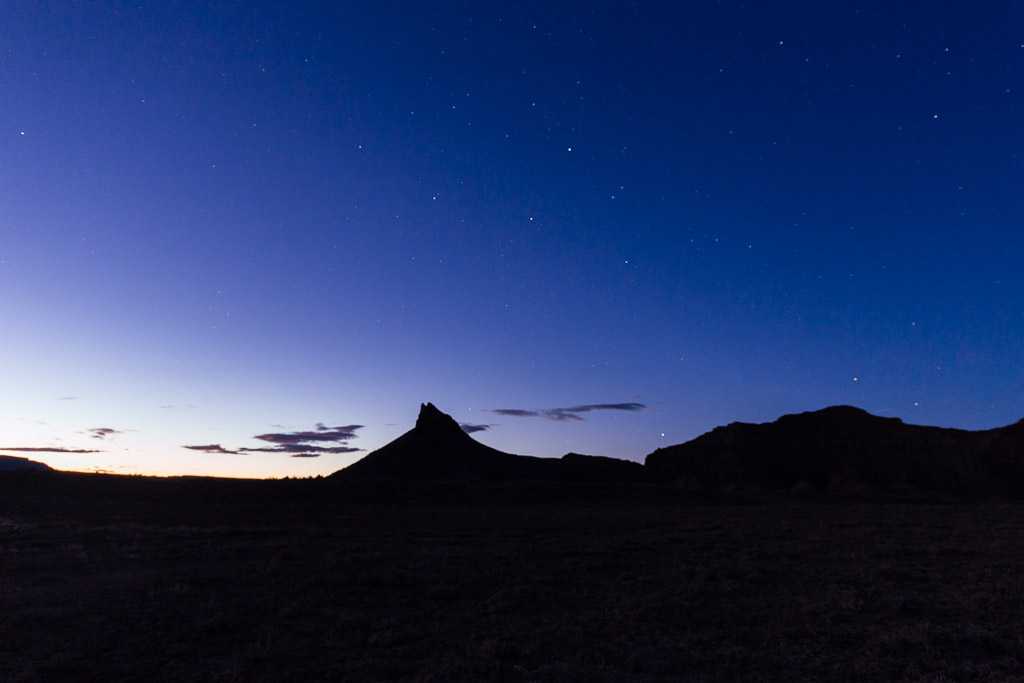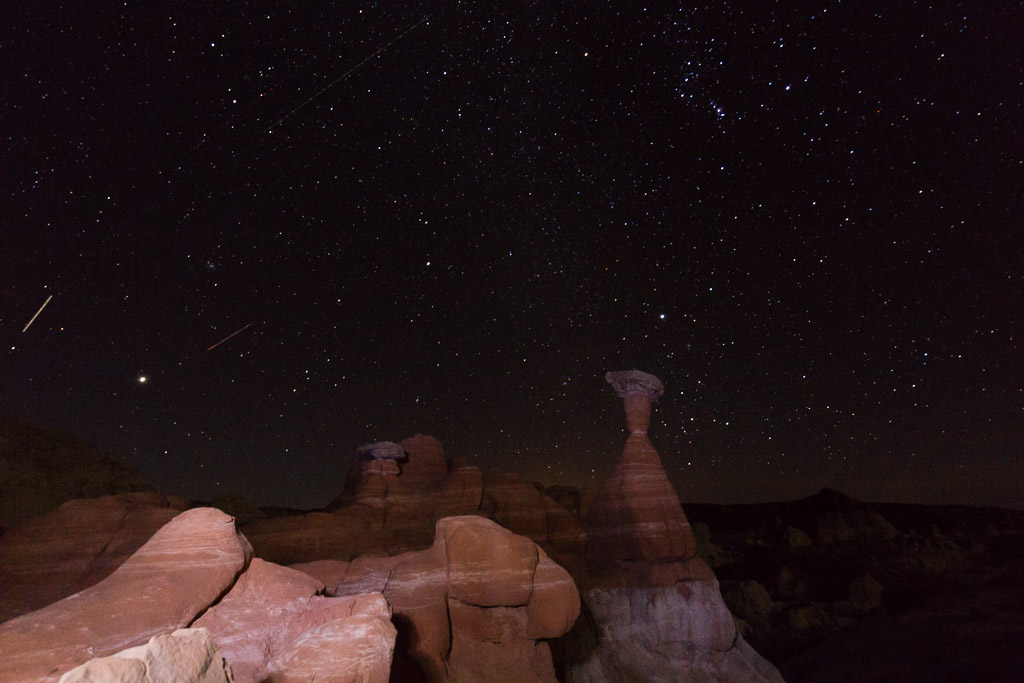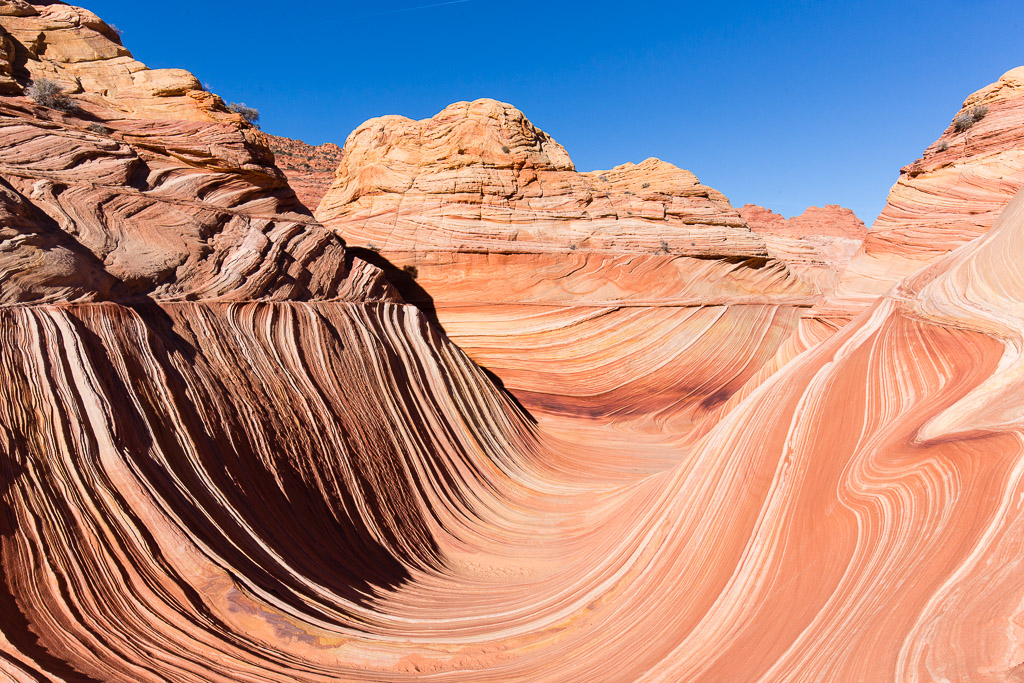I recently rented a Canon 16-35 f/4 IS lens for my trip to Coyote Buttes in southern Utah. Since I knew I would be shooting swirling rock and large canyons, a 16mm is a necessity in this type of environment for good landscape photographs. I discounted a number of other options. The 16-35 II f/2.8 does not have a stellar reputation for sharpness. The Tokina 16-28 f/2.8 is really sharp but also has significant issues with CA. The 14mm f 2.8 would have only usable for some shots. I would have needed a different lens for many other shots. The same applied to the 17mm TSE. It’s a good lens but not very flexible. The Zeiss 15mm is considered the sharpest lens of the bunch but again I would be limited in use. The 16-35 f/4 seemed like the best of the options for what I was going to be shooting.
After using the lens for a week, I have to say I liked the lens a lot. It is is significantly lighter and easier to hold than a 24-70 f/2.8. It balances really well on the camera (in this case, a 5D MKIII) and the IS certainly comes in handy in certain situations. The 16-35 f/4 delivers very sharp pictures. I had very good sharpness except for the extreme corners at 16mm. I had no issues getting sharp images at 1/30 and 1/60 second. I used a tripod for images below that level.
I also tried out the lens on a couple of astrophotography shots. It has a lot less coma (lens aberration that elongates stars in the corners) than my 24-70 2.8. While the 16-35 is still not perfect in this regard, it at least produces a usable photo. I’d like to do further testing against one of the Rokinon lenses which are supposed to be much better in this regard in comparison to most of their Canon counterparts. The downside of this lens for astrophotography, is of course, its maximum aperture of f4. This means that to utilize the 25 second shutter speed rule to prevent star trails with this lens at 20mm or so, you will have to use ISO 6400.
The one downside I noted is that lens hunted a lot to focus on fine detail such as lines in the rock at close distances. This could of been due to a couple of things: my rental lens was not up to snuff or the rock lines didn’t provide enough contrast to focus on. I didn’t have any issue focusing on larger objects like trees or mountains so again, I will have to do more testing to see what was causing this phenomenon.
Overall, I really like this lens and would consider adding it to my bag if I end up needing an ultra wide zoom on a regular basis.


